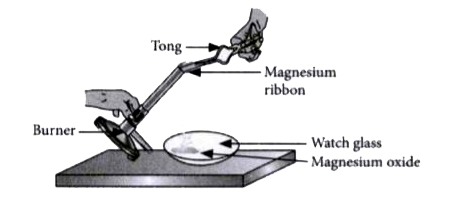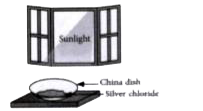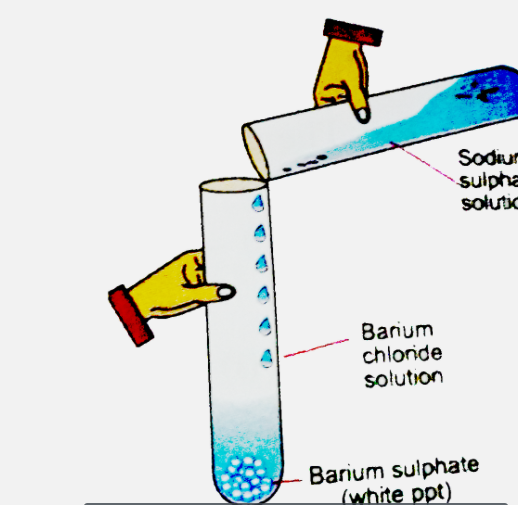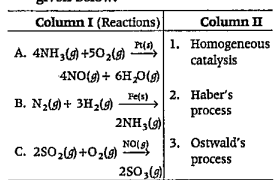Observe the given figure carefully and select the correct statements.
I. Heat is evolved in this reaction.
II. The colour of the mixture in the conical flask is pink in the beginning.
III. It represents a neutrali-sation reaction.
IV. No new substance is formed in the reaction.

I, II and III only
II and III only
III and IV only
I, II, III and IV
The correct Answer is:A
New substance (salt) is formed in the reaction.
Topper's Solved these Questions
Similar Questions
Knowledge Check
Consider the following nuclear reactions and select the correct statemetns from the option given below .
Reaction I n→p+e−+v Reaction II: p→n+e++vAFree neutron is unstable, therefore reaction I is possibleBFree proton is stable, therefore reactionII is not possibleCInside a nucleus, both decays (reactions I and II) are possibleDInside a nucleus, reaction I is not possible but reaction II is possible.Observe the given figure and identify the correct statements.

(i) Magnesium ribbon burns in air with a dazzling white flame.
(ii) It is a displacement reaction.
(iii) Magnesium oxide is basic in nature and turns most red litmus paper blue.
(iv) It is an exothermic reaction.A(i) and (iii)B(ii) and (iv)C(i), (iii) and (iv)D(i) and (iv)Observe the given figure and answer the question that follows:

State True (T) or False (F) for the following statements.
(i) It is a photodecomposition reaction.
(ii) Silver chloride turns grey in sunlight to form silver metal.
(iii) It is an exothermic reaction.
(iv) Silver bromide also behaves in the same way and used in black and white photography.A(i)(ii)(iii)(iv)TTTTB(i)(ii)(iii)(iv)TFTFC(i)(ii)(iii)(iv)TFFTD(i)(ii)(iii)(iv)TTFT
Observe the given figure and answer the following questions.
(a) Write the complete balanced reaction for the reaction that takes place.
(b) Type of reaction involved.
(c) Is there any precipitate formed.
(d) If any precipitate formed, write the colour of the precipitate.

View SolutionFrom the given figure:
i) Calculate ΔE for the reaction and energy of activation for the forward reaction and energy of activation for the backward reaction.
ii) The dotted curve is in the presence of a catalyst, what is the energy of activation for the two reactions in the presence of the catalyst?
iii) will the catalyst change the extent of the reaction?

View SolutionApparatus: Test tube, conical flask, balance, etc.
Chemicals: Sodium chloride and silver nitrate.
Procedure:
i. Take sodium chloride solution in a conical flask and silver nitrate solution in a test tube.
ii. Tie a thread to the test tube and insert it carefully into the conical flask. Make the conical flask air tight by fitting a rubber cork.
iii. Weigh the conical flask with the help of a balance.
iv. Now tilt the conical flask and mix the solution present in the test tube with the solution in the conical flask.
v. Weigh the conical flask again.
Did any insoluble substance form?
View SolutionMatch List-I (reaction) with List-II (name of the reaction) and select the correct answer using the codes given below the lists:

View SolutionMatch the enzymes given in column I with their catalytic reaction given in column II and select the correct answer.

View Solution


